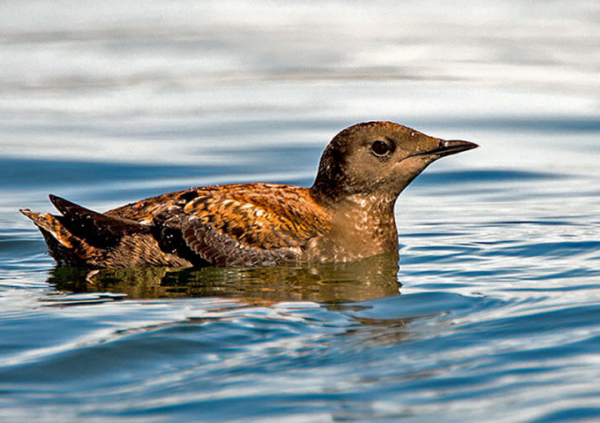
Researchers are attracting Marbled Murrelets using audio feeds to prime nesting habitat in old-growth forests (photo by Janine Schutt).
|
Researchers are experimenting with audio feeds played from old-growth forest of tall stands of Douglas fir and Sitka spruce to help them find prime nesting habitat in Oregon. The endangered Marbled Murrelets are the newest in a line of seabirds that show promising results using a technique known as “social attraction.” Other alcids, including puffins, regard the presence of members of their species in appropriate habitat as a sign of a good place to nest, which made biologists wonder whether murrelets might use similar cues.
A team of biologists led by Oregon State University professor Jim Rivers and retired professor Kim Nelson have been trying the approach with Marbled Murrelets, and now it seems these small seabirds may be the latest on a growing list of birds that can be successfully attracted to nesting habitat by the social-attraction technique.
Using audio playback of calling Marbled Murrelets, the Oregon murrelet team identified sections of old-growth forest that might be good nesting areas but weren’t thought to be utilized at the time. They divided the 28 sites into 2 groups. At 14 of the sites they broadcast recorded murrelet calls on a custom-designed device that could both play and record calls; the other 14 sites served as controls where no calls were played. The next year researchers found that audio recorders at the sites where they broadcast Marbled Murrelet calls were 15 times more likely to detect the birds’ plaintive keer calls made by murrelets, a marker that the forest area was being occupied during the nesting season. Nelson and Rivers were thrilled, and the scientists surmised that the murrelets were attracted to these sites because they heard murrelet calls played there the previous year.
Overall, it turns out that about 1/3 of all seabird species have benefited from social attraction conservation projects, according to Stephen Kress, the founder of Audubon’s Project Puffin. Kress famously pioneered this method to attract Atlantic Puffins to nest on Eastern Egg Rock Island off the coast of Maine in the 1970s.
To learn more about the Marbled Murrelet Project and other similar studies please refer to the expansive original article published recently in The Living Bird at Sounds Like Home: Experimenting with Audio to Help Marbled Murrelets Find Prime Habitat | All About Birds All About Birds